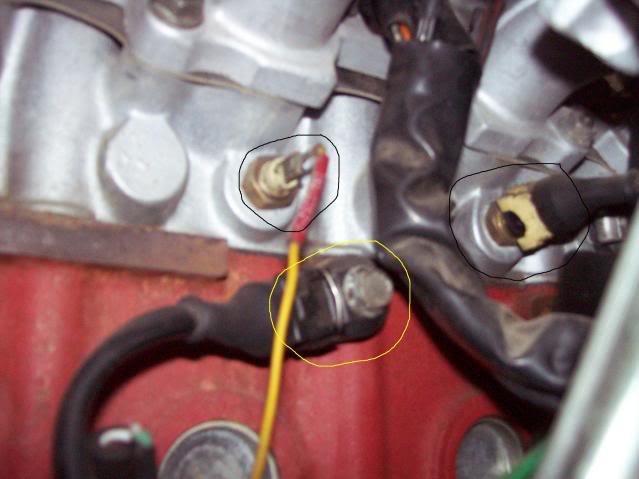|
Hi,
Boy, you do have a strange thing going on for what should be a simple resistive circuit operating the gauge.
There is a heating element mounted on or near a bimetal strip of metal inside the gauge.
The heat warps the mechanism to deflect the needle.
There is a solid state voltage regulator device that controls the voltage below battery voltage to maintain a more dependable fixed rate of current into the instruments.
Since the fuel gauge is working correctly, because you don’t mention a problem with it, I would discount it to NOT have failed.
A bad ground is always possible but they don’t usually drift with regularity.
A bad power connection to the cluster would affect everything but a bad one on the board is another story. You might want to check the strip of trace that jumps over the speedometer and is under some screws at each end for looseness or bad contact. I think it’s suppose to act like a fuse in some of Art’s posts or articles on his site.
On the older cars there is a fixed resistance that can be used to check the calibration of a gauge to ground. You are not suppose to put them directly to ground as it will overheat them and throw it out of calibration.
You can use resistors as it will be the same now that you took the compensation board out.
I had it written down somewhere but I’m without my notes! It’s in my 1978 green books.
I think ten ohms stops it at the edge or in the red zone.
Now, I will say that the 175 degree temperature is very low temperature for the car.
You want 192 to 197 degrees. 87 C min. or a 92C thermostat for a better performance. IMO these temperatures drive off moisture in the oil.
The higher one holds extra heat for a longer duration between short drives and improves emissions and hopefully gas mileages.
I would say the thermostat is stuck open! It might work correctly at times and then cycles to hang in one position or another.
What you don’t want, is a permanently closed one to happen!
This stuff can happen to the best of made thermostats.
The working life of some lasting way longer than others.
This is why I like Wahler brand because they date them upon being manufactured.
I have a lousy record of keeping records!
At least I know when it does miss it’s mark, I have an idea of the length of service.
IMHO they hold a tighter line of staying on its target temperature, doing it repetitively, to be worth a couple dollars more.
The dating in the brass material is a plus. They care enough, if you care!
When you pop one back out after a long, long time in there, of which I have seen, it shouts volumes either way it goes!
Now that all of that is out, I do have worries over Wahler. I hope someone gets a read on these two developments lately.
Engine oil are doubling in price and antifreeze is at its highest level yet!
Electric cars and the associated world of it, are coming!
https://www.borgwarner.com/newsroom/press-releases/2013/12/16/borgwarner-acquires-wahler
https://www.borgwarner.com/newsroom/press-releases/2019/01/04/borgwarner-agrees-to-sell-thermostat-business-to-arlington-industries-group
Anyhow!
Try for the calibration research for the gauge.
Definitely test or boil your thermostats, new or old, in a cooking oil medium to see right where it cracks open and observe how much more it opens.
Note the range but it’s the first cracking space that’s important as to when flow starts.
You can control the temperature around it with light vegetable oil more precisely.
Water bubbles and rolls off the bottom a pan violently. Infrared heat affects the thermostat that’s not in an engine. I like oils convection thermals better.
Have a good day!
Phil
|


